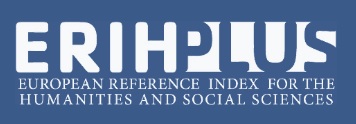G. A. Savchuk, G. A. Bannykh, S. V. Kulpin, R. M. Kurashov. Communication of Local Governments and the Population in Social Media: Regions of the Ural Federal District
https://doi.org/10.15507/2413-1407.129.032.202404.653-672
УДК / UDC 342.5:316.472
Abstract
Introduction. The relevance of the topic is determined by the need for a practical solution to the problem of communication assessment of local government bodies with the population in social media. The lack of an effective methodology for such an assessment and its results increases the importance of this work. The purpose of the article is to analyse the success of communication of the executive authorities of the municipal entities of the Ural Federal District with the population on the official pages of the social network “VKontakte” and to offer the success index.
Materials and Methods. The authors used the database of official accounts of municipal, municipal district and municipal area administrations (n = 203) and heads of corresponding municipalities (n = 198) of the regions of the Urals Federal District in the social network “VKontakte”. The data were collected using the parsing tool Cerebro 3.0; the data were analyzed using both standard indicators of social network analysis and those proposed by the authors. The index method was used to summarize the data. This approach made it possible to systematize and aggregate heterogeneous information in order to compare the objects of analysis.
Results. The authors have developed and tested on the materials of the regions of the Urals Federal District a methodology for calculating the index of success of communication between local governments and the population in the social network “VKontakte”. It has also been demonstrated that higher publication activity does not unequivocally lead to more successful communication outcomes. It is revealed that in most cases, municipalities with small populations are the most successful communicators. It is noted that subscriber engagement is higher in the accounts of heads of municipalities compared to the accounts of municipal administrations.
Discussion and Conclusion. The authors’ proposed methodology for assessing the success of local government communications helps to identify the most successful practices, differentiate municipalities and regions. The index allows to go from evaluation of information openness to analysis of content published and recommendations on how to what content is needed to be more successful in communicating with the public. The results of the study will be useful for state and municipal employees involved in communication with the public.
Keywords: government openness, communication of authorities with the population, success of communication, public communities in social media, index of communication success
Conflict of interest. The authors declare no conflict of interest.
Funding. The research was supported by the Russian Science Foundation grant No. 24-28-01153 (https://rscf.ru/project/24-28-01153/).
For citation: Savchuk G.A., Bannykh G.A., Kulpin S.V., Kurashov R.M. Communication of Local Governments and the Population in Social Media: Regions of the Ural Federal District. Russian Journal of Regional Studies. 2024;32(4):653–672. https://doi.org/10.15507/2413-1407.129.032.202404.653-672
REFERENCES
1. Trencher G. Towards the Smart City 2.0: Empirical Evidence of Using Smartness as a Tool for Tackling Social Challenges. Technological Forecasting & Social Change. 2019;142:117–128. https://doi.org/10.1016/j.techfore.2018.07.033
2. Abramova S.B. Digital Participation: Category Conceptualization in Foreign Practice of Civic Engagement. Digital Sociology. 2022;5(4):4–14. (In Russ., abstract in Eng.) https://doi.org/10.26425/2658-347X-2022-5-4-4-14
3. Lebezova E.M., Ovcharenko L.A. A Model of Citizens’ Digital Participation in the Smart Environment. Journal of New Economy. 2022;23(3):62–85. https://doi.org/10.29141/2658-5081-2022-23-3-4
4. Gris O.A., Sosnovskaya A.M. [Social Networks as a Tool for Solving Government Problems]. Nauchnye trudy Severo-Zapadnogo instituta upravleniya RANKhiGS. 2023;14(4):228–234. (In Russ.) Available at: https://spb.ranepa.ru/wp-content/uploads/2024/01/n-trud_2023_t14_v4.pdf (accessed 17.09.2024).
5. Babash D.B. The Use of Social Networks in Public Administration. Society and Civilization. 2023;5(1):22–24. EDN: LSPJZI
6. Allegretti G., Bassoli M., Colavolpe G. On the Verge of Institutionalisation? Participatory Budgeting Evidence in Five Italian Regions. Financial Journal. 2021;13(2):25–45. https://doi.org/10.31107/2075-1990-2021-2-25-45
7. Dean R. Participatory Governance in the Digital Age: From Input to Oversight. International Journal of Communication. 2023;17:3562–3581. Available at: https://ijoc.org/index.php/ijoc/article/view/18833 (accessed 17.09.2024).
8. Barash R.E. Social Media as a Factor Forming Social and Political Attitudes, the Russian Context. Monitoring of Public Opinion: Economic and Social Changes. 2022;(2):430–453. (In Russ., abstract in Eng.) https://doi.org/10.14515/monitoring.2022.2.1980
9. Zotov V.V., Gubanov A.V. Social Media as Dialogue Platforms for Citizens and Authorities of the Central Federal District’s Entities. Digital Sociology. 2021;4(4):28‒39. (In Russ., abstract in Eng.) https://doi.org/10.26425/2658-347X-2021-4-4-28-39
10. Lerouge R., Lema M.D., Arnaboldi M. The Role Played by Government Communication on the Level of Public Fear in Social Media: An Investigation Into the Covid-19 Crisis in Italy. Government Information Quarterly. 2023;40(2):101798. https://doi.org/10.1016/j.giq.2022.101798
11. Wang F., Li Y. Social Media Use for Work during Non-Work Hours and Work Engagement: Effects of Work-Family Conflict and Public Service Motivation. Government Information Quarterly. 2023;40(3):101804. https://doi.org/10.1016/j.giq.2023.101804
12. Meyer S.J., Wiley K. A Framework for Messy Communication: A Qualitative Study of Competing Voices of Authority on Social Media. Administrative Sciences. 2024;14(7):145. https://doi.org/10.3390/admsci14070145
13. Bonson E., Royo S., Ratkai M. Citizens’ Engagement on Local Governments’ Facebook Sites. An Empirical Analysis: The Impact of Different Media and Content Types in Western Europe. Government Information Quarterly. 2015;32(1):52–62. https://doi.org/10.1016/j.giq.2014.11.001
14. Samsonova T.N., Pechagina Yu.V. [Improving the Work on Developing Communication with the Population in the Local Administration in the Context of Using Information Technologies]. Uchenye zapiski Altaiskogo filiala RANKhiGS. 2021;(18):29–33. (In Russ.) Available at: https://alt.ranepa.ru/files/texts/vest/2021_uz_018.pdf (accessed 17.09.2024).
15. Kozhevnikov O.A., Savoskin A.V. Social Networks as a Developing Method of Communication between Authorities and Citizens: Status and Prospects. Scientific Bulletin of the Omsk Academy of the Ministry of Internal Affairs of Russia. 2024;30(2):151–155. (In Russ., abstract in Eng.) Available at: https://nv.omamvd.ru/wp-content/uploads/2017/11/Научный-вестник-Омской-академии-МВД-России.-2024.-№2-93.pdf (accessed 17.09.2024).
16. Maksimenko A.A., Zaitsev A.V., Deyneka O.S., Zyablikov A.V., Akhunzyanova F.T. Assessment by the Population of the Effectiveness of Digital Communication of the Heads of Regions in the Internet Dialogue “Power ‒ Societyˮ. Russian Journal of Regional Studies. 2024;32(2):217–241. (In Russ., abstract in Eng.) https://doi.org/10.15507/2413-1407.127.032.202402.217-24
17. Krasnoperov A.Yu. Municipal Authorities as Subjects of Mass Network Communication in the Information Age. Tomsk State University Journal of Philosophy, Sociology and Political Science. 2023;(74):224–233. (In Russ., abstract in Eng.) Available at: https://journals.tsu.ru/philosophy/&journal_page=archive&id=2378 (accessed 17.09.2024).
18. Babaeva A.A. Government Authorities in Social Networks: Analysis of Moscow Government Accounts. Moscow University Bulletin. Series 10: Journalism. 2021;(3):198–215. (In Russ., abstract in Eng.) https://doi.org/10.30547/vestnik.journ.3.2021.198215
19. Abramova V.D., Vozovikov O.I. Information Policy of Government Bodies in Social Networks. Proceedings of Voronezh State University. Series: Geography. Geoecology. 2024;2:99–103. (In Russ., abstract in Eng.) Available at: http://www.vestnik.vsu.ru/pdf/phylolog/2024/02/2024-02-20.pdf (accessed 17.09.2024).
20. Vasilenko I.A. State Publics of Local Government Bodies of the Altai Territory on VKontakte: An Analysis Experience. PR and Advertising in a Changing World: A Regional Aspect. 2023;(28):17–25. (In Russ., abstract in Eng.) EDN: PPNOYG
About the authors:
Galina A. Savchuk, Cand.Sci (Sociol.), Associate Professor, Head of the Chair of Integrated Marketing Communications and Branding, Ural Federal University named after the First President of Russia B. N. Yeltsin (19 Mira St., Yekaterinburg 620062, Russian Federation), ORCID: https://orcid.org/0000-0003-2980-8970, Scopus ID: 57213002265, SPIN-code: 4639-1293, Galina.Savchuk@urfu.ru
Galina A. Bannykh, Cand.Sci (Sociol.), Associate Professor, Associate Professor of the Chair of Theory, Methodology and Legal Support of State and Municipal Administration, Ural Federal University named after the First President of Russia B. N. Yeltsin (19 Mira St., Yekaterinburg 620062, Russian Federation), ORCID: https://orcid.org/0000-0002-8175-591X, Researcher ID: T-8511-2017, Scopus ID: 55825650400, SPIN-code: 1685-7896, G.A.Bannykh@urfu.ru
Sergey V. Kulpin, Cand.Sci (Econ.), Associate Professor, Associate Professor of the Chair of Integrated Marketing Communications and Branding, Ural Federal University named after the First President of Russia B. N. Yeltsin (19 Mira St., Yekaterinburg 620062, Russian Federation), ORCID: https://orcid.org/0000-0002-3998-9341, Researcher ID: R-6859-2016, Scopus ID: 57216868677, SPIN-code: 1852-0951, s.v.kulpin@urfu.ru
Ruslan M. Kurashov, Assistant of the Chair of Integrated Marketing Communications and Branding, Ural Federal University named after the First President of Russia B. N. Yeltsin (19 Mira St., Yekaterinburg 620062, Russian Federation), ORCID: https://orcid.org/0009-0000-6205-1813, SPIN-code: 1151-2061, ruslan.kurashov@urfu.ru
Contribution of the authors:
G. A. Savchuk – research concept; study design; methodology; data analysis.
G. A. Bannykh – research concept; review of research on the research topic.
S. V. Kulpin – research idea; research concept; analysis of statistical data.
R. M. Kurashov – research concept; collection and analysis of empirical material; description of results.
Availability of data and materials. The datasets used and/or analyzed during the current study are available from the authors on reasonable request.
The authors have read and approved the final manuscript.
Submitted 30.07.2024; revised 04.09.2024; accepted 26.09.2024.

Материалы журнала "РЕГИОНОЛОГИЯ REGIONOLOGY" доступны по лицензии Creative Commons «Attribution» («Атрибуция») 4.0 Всемирная
















